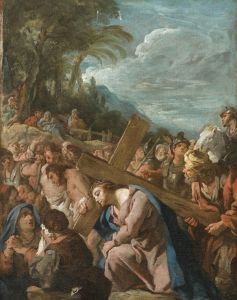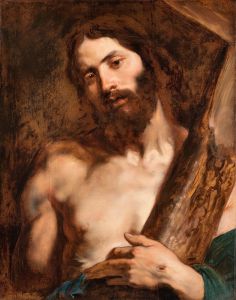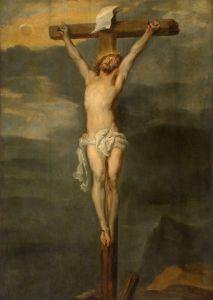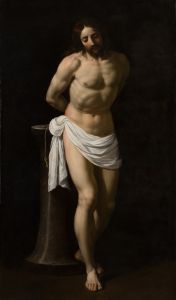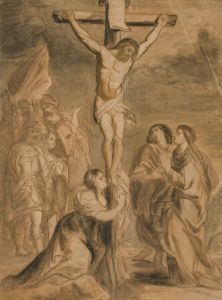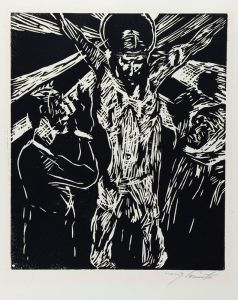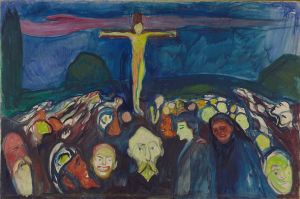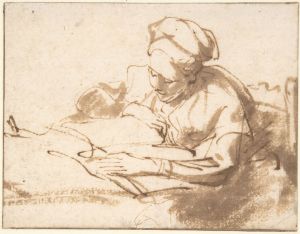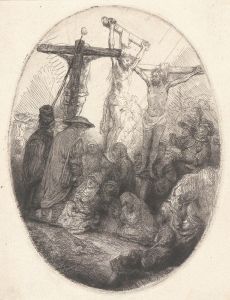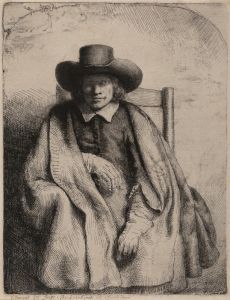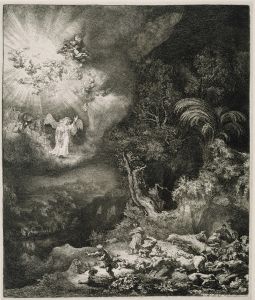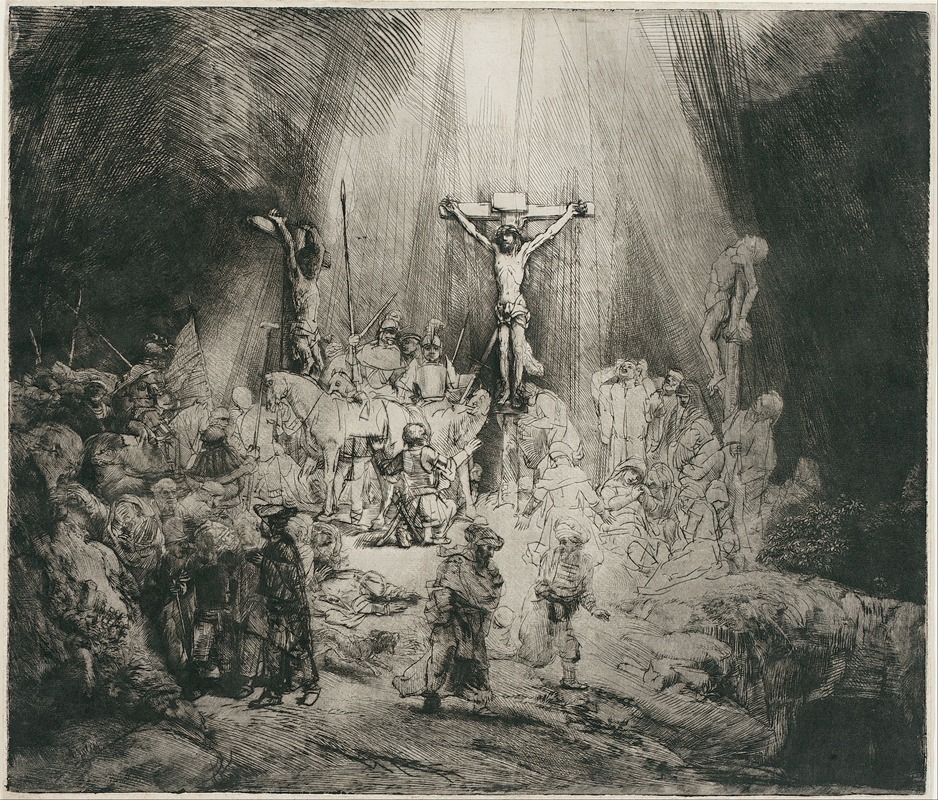
Christ Crucified Between the Two Thieves
A hand-painted replica of Rembrandt van Rijn’s masterpiece Christ Crucified Between the Two Thieves, meticulously crafted by professional artists to capture the true essence of the original. Each piece is created with museum-quality canvas and rare mineral pigments, carefully painted by experienced artists with delicate brushstrokes and rich, layered colors to perfectly recreate the texture of the original artwork. Unlike machine-printed reproductions, this hand-painted version brings the painting to life, infused with the artist’s emotions and skill in every stroke. Whether for personal collection or home decoration, it instantly elevates the artistic atmosphere of any space.
Christ Crucified Between the Two Thieves is a drawing by the Dutch artist Rembrandt van Rijn, created in 1653. This work is also known as the "Three Crosses" and is one of Rembrandt's most notable depictions of the crucifixion of Jesus Christ. The piece is executed in drypoint on vellum, a technique that Rembrandt mastered during his career. It is considered a significant example of his ability to convey dramatic intensity and emotional depth through light, shadow, and composition.
The drawing portrays the crucifixion scene described in the New Testament, with Jesus Christ on the central cross and the two thieves crucified on either side of him. The composition is densely populated with figures, including Roman soldiers, onlookers, and mourners, creating a chaotic and emotionally charged atmosphere. Rembrandt's use of chiaroscuro, the contrast between light and dark, is particularly striking in this work. The central figure of Christ is illuminated, drawing the viewer's attention to his suffering and sacrifice, while the surrounding figures are cast in varying degrees of shadow, emphasizing the drama and spiritual significance of the moment.
The "Three Crosses" exists in multiple states, as Rembrandt reworked the plate over time. Each state reveals changes and refinements in the composition, showcasing Rembrandt's evolving vision for the piece. The fourth state, in particular, is noted for its darker and more somber tone, achieved through additional shading and alterations to the figures and background. These changes reflect Rembrandt's ability to experiment with the medium and his dedication to achieving the desired emotional impact.
This work is part of Rembrandt's broader exploration of biblical themes, which he approached with a deep sense of humanity and psychological insight. His depictions of religious subjects often focus on the human experience and emotions of the characters, making them relatable to viewers. "Christ Crucified Between the Two Thieves" is no exception, as it captures the anguish, despair, and hope inherent in the crucifixion narrative.
The drawing is held in high regard for its technical mastery and emotional power. Today, impressions of the various states of the "Three Crosses" can be found in major museum collections, including the Rijksmuseum in Amsterdam and the British Museum in London. These institutions preserve and display the work as a testament to Rembrandt's genius and his contribution to the art of printmaking.





